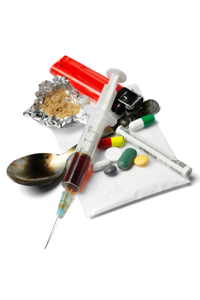The Origins of Illegal Drugs in the United States
 The United States as a nation is the largest single consumer of illicit drugs in the world. In addition to consuming the largest number of illicit substances overall, the U.S. is also either the largest or one of the largest consumers of each of the principle varieties of illicit drugs.
The United States as a nation is the largest single consumer of illicit drugs in the world. In addition to consuming the largest number of illicit substances overall, the U.S. is also either the largest or one of the largest consumers of each of the principle varieties of illicit drugs.
The United States itself produces some illegal drugs on a relatively large scale, particularly cannabis. However, the large market for the drugs in the country means that the United States has never been a significant exporter. And in spite of its own production, the majority of the illegal drugs in the U.S. come from outside the country.
The World Drug Report issued by the United Nations takes a yearly look at drug manufacturing, drug consumption, and other issues related to the illegal drug trade around the globe. Here is a look at where the principle varieties of illicit drugs in the United States originate.
Cannabis
Cannabis is by far the most widely used illegal drug in the United States and across the globe. Cannabis plants are cultivated and consumed (usually in herb or resin form) in every country in the world. Cannabis is also an extremely lucrative export crop for many countries – Afghanistan, for example, usually associated with the cultivation of opium poppies, actually makes more money on a yearly basis from the sale of cannabis.
The cannabis in the United States continues to come predominantly from south of the border in Mexico. Canada has historically been a large importer of cannabis into the United States, but the data now indicates that the cannabis produced in the United States itself has now outstripped Canadian imports.
Cocaine
Global production of cocaine is dominated by the South American countries of Colombia, Bolivia, and Peru. In the past ten years, overall cultivation of cocaine has decreased, with the exception of a significant jump in 2007. These declines correspond with decreased production in the state of Colombia, where overall cultivation of cocaine is at roughly 43 percent of what it was in 2001. However, production has steadily increased in both Peru and Bolivia. In 2011, Peru and Colombia both accounted for approximately 60,000 hectares of cocaine cultivation, while Bolivia accounted for over 30,000.
The data suggests that the majority of the cocaine imported into Europe now comes from Peru and Bolivia, but Colombia continues to be the primary source of the cocaine imported into the United States.
Opioids
Afghanistan is the single largest producer of opium, both in terms of total volume of opium as well as the number of hectares devoted to opium cultivation. Slightly over 50 percent of the opium produced in Afghanistan in 2011 was converted into heroin. Afghanistan has been the world leader in total potential opium production for many years, the only exception over the last two decades coming in 2001. Prior to 2001, Afghanistan trailed Myanmar (Burma) in terms of overall hectares of cultivation, but has overtaken Myanmar since 2003.
In total, Afghanistan accounted for 63 percent of the world’s opium production in 2011. Myanmar and neighboring Laos together accounted for another 20 percent of the world’s opium production, while most of the remainder came from Latin American countries such as Mexico and Colombia.
In 2010, a disease struck many of the poppy plants in Afghanistan and greatly reduced the country’s overall production. This decline did not affect the overall demand for and consumption of opium worldwide in 2010 or 2011, and researchers estimate that it may be several years before it becomes clear whether the disease will have any far-reaching impact.
Amphetamine-Type Stimulants
U.S. imports of amphetamine-type stimulants (ATS) come predominantly from Mexico and Canada. The ATS market is the most varied of the illegal drug markets, encompassing amphetamines, methamphetamines, and the drug commonly known as “ecstasy,” among others. Mexico is a particularly large producer of methamphetamines, while Canada is a significant producer of ecstasy.
The United States itself is also a relatively large producer of ATS. In Southeast Asia, Myanmar is a large-scale manufacturer of methamphetamines. Overall, the many different varieties of amphetamines and other psychoactive substances that affect the brain in similar ways to amphetamines makes ATS a challenging market to track, both in terms of consumption and production. The variety of ingredients and the flexibility of manufacturing has make these drugs challenging to detect and to track.



